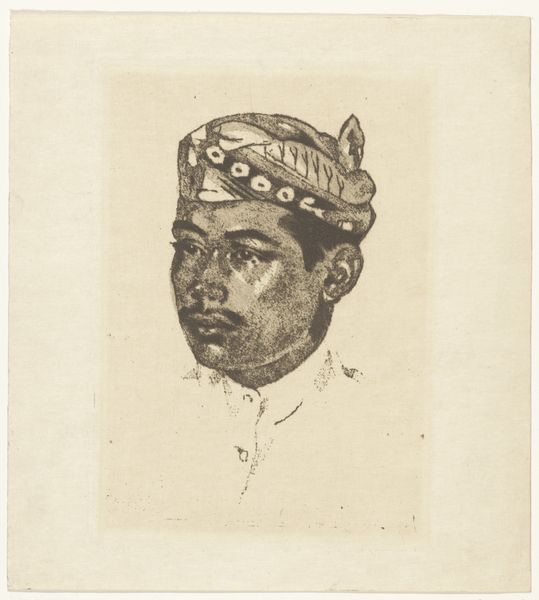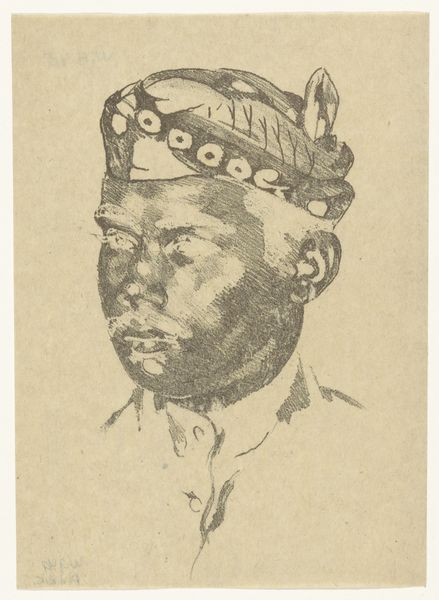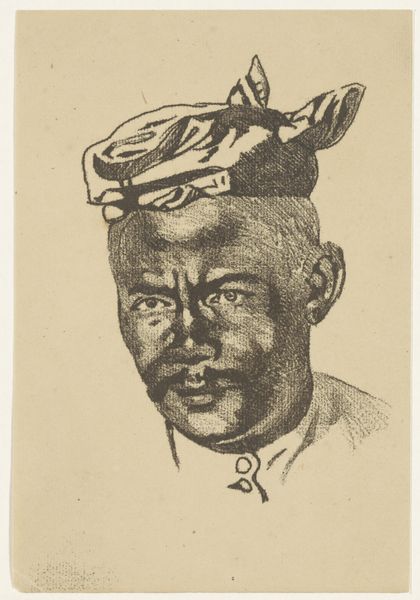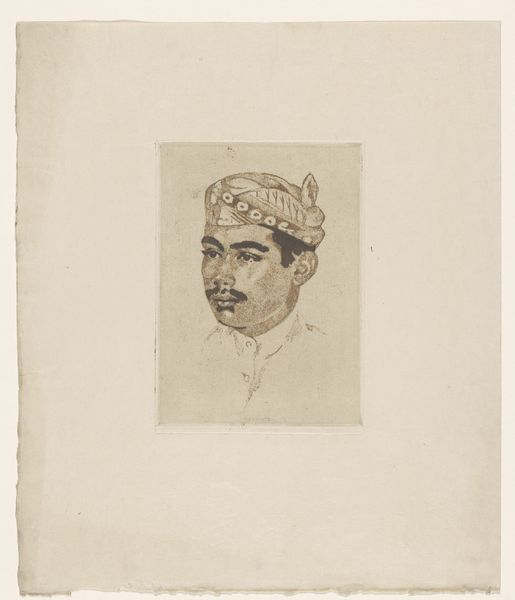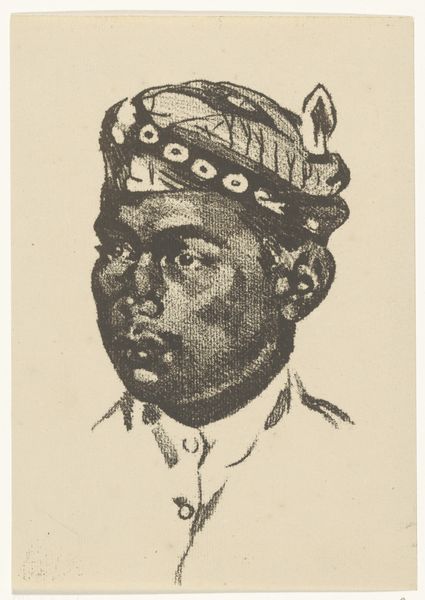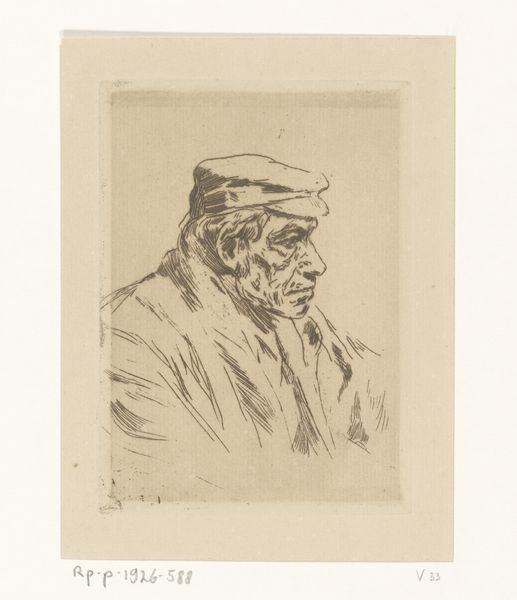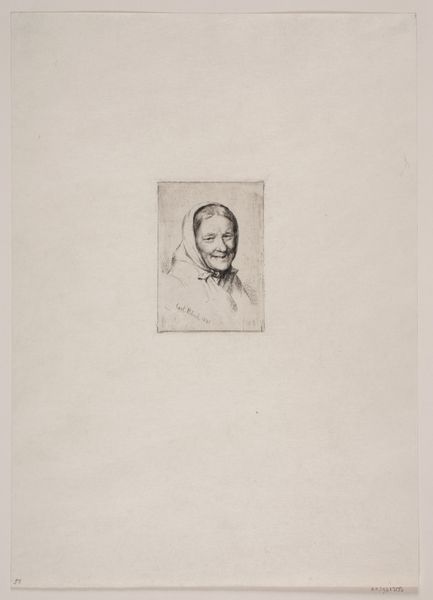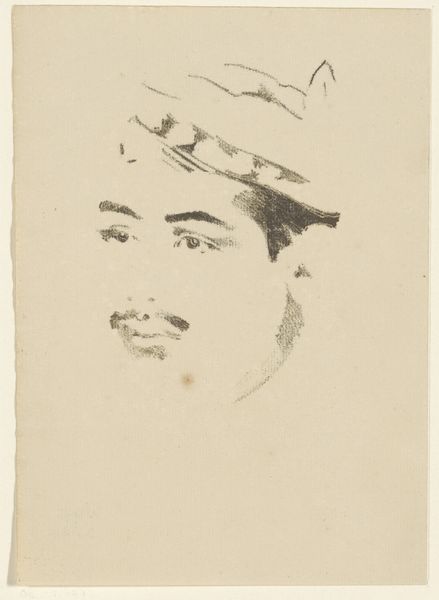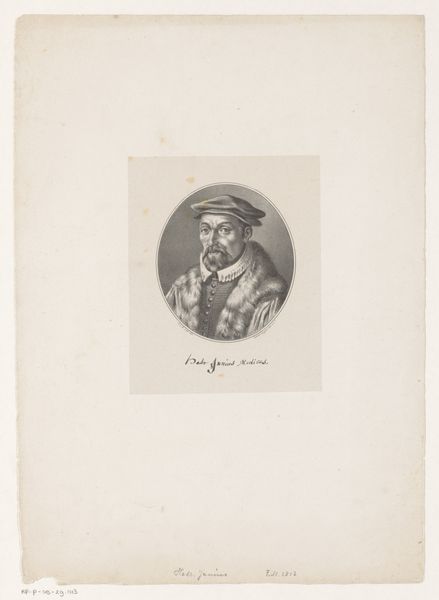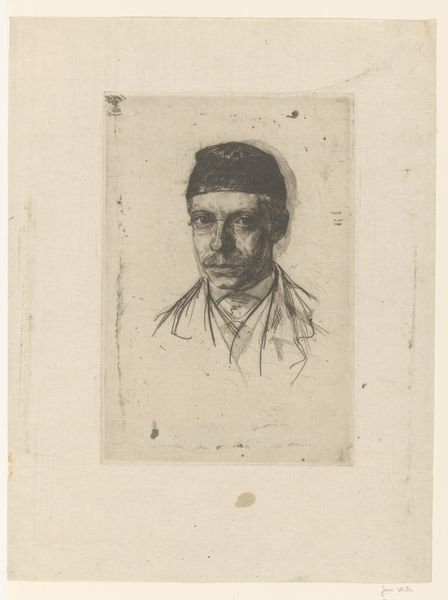
drawing, pencil
#
portrait
#
pencil drawn
#
drawing
#
toned paper
#
pencil sketch
#
figuration
#
pencil drawing
#
pencil
#
modernism
Dimensions: height 198 mm, width 139 mm
Copyright: Rijks Museum: Open Domain
Curator: Here we have Willem Witsen’s “Portret van Amit,” circa 1921, housed right here at the Rijksmuseum. It’s a drawing, executed in pencil on toned paper. What's your initial take on it? Editor: Immediately, there's a quiet dignity that radiates from this portrait. The man's gaze is direct, but not confrontational. His headwear and the careful shading around the eyes speak to a complex identity and history hinted at but not overtly explained. Curator: Indeed. Witsen's choice of pencil and toned paper speaks to the immediacy and accessibility of the medium itself. It bypasses the potential for grandstanding seen in oil painting, and suggests a direct relationship between the artist and sitter. What about the visible sketch lines; do those speak to a specific historical influence? Editor: Absolutely. The unfinished quality, the visible lines, gives us a sense of the working process. It nods to modernist movements away from strict academic realism but also the importance of raw talent and material expression. This style evokes, for me, the colonial world and how the artist might relate to depicting sitters during a period of immense cultural shifts, a way of perhaps suggesting the work in progress, not just of the image but the world itself. Curator: Very insightful! Witsen often moved within artistic circles deeply engaged in social and political questions. His interest in depicting someone like Amit signals a desire to grapple with broader societal narratives, even within the framework of portraiture. Editor: Exactly. Beyond the technical skill, I see the hat that Amit wears is interesting in relation to other visual representations, what does that symbolize? Does it connote power, religion, or some other status or cultural association in the sitter’s culture or within this time and space of the image? The mustache itself is fascinating as a signifier of masculinity. These symbols are laden with potential narratives. Curator: These clues indeed prompt us to consider the nuances within this seemingly simple portrait, which can open an exciting historical study about the sitter or even the status of pencil work in this artist’s overall material practice. What’s been your final impression looking at it more closely? Editor: I’m leaving here wanting to know more about Amit and the relationship between the artist and sitter. Curator: I'll walk away thinking more deeply about the value we give to “simple” tools and how drawing remains a foundational aspect to various complex social meanings.
Comments
No comments
Be the first to comment and join the conversation on the ultimate creative platform.
